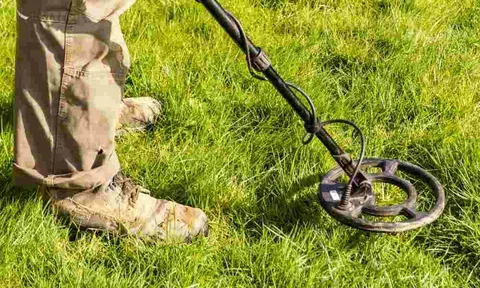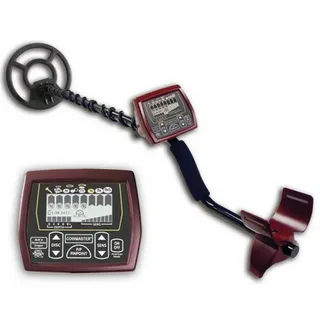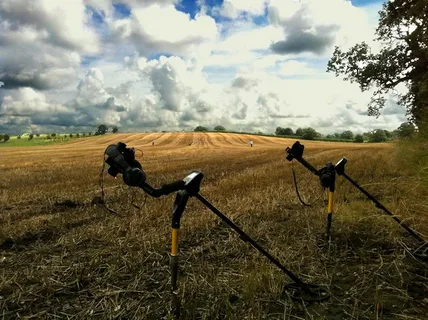Underground water detector technology has revolutionized the way we search for hidden water sources. With the ability to locate water sources beneath the earth's surface, this innovative tool has opened up new possibilities for accessing clean and reliable water supplies. By using an underground water detector, individuals and organizations can uncover hidden water sources with precision and efficiency, helping to address water scarcity and ensure sustainable water management. In this article, we will explore the capabilities of underground water detectors and their potential impact on water resource exploration and management.
An underground water detector is a device used to locate hidden water sources beneath the surface of the ground. These devices use various methods such as ground penetrating radar, electromagnetic induction, or seismic technology to detect changes in the composition or density of soil and rock, which can indicate the presence of water. Using an underground water detector can be helpful for a variety of applications, including locating underground pipes or utilities, identifying potential well sites for drilling, or assessing the risk of flooding in an area. By accurately pinpointing the location and depth of water sources, these devices can help to ensure efficient and cost-effective water resource management. In addition to professional use, underground water detectors are also popular among hobbyists and treasure hunters who are interested in locating hidden water sources, geological formations, or buried artifacts. These devices are available in a range of sizes and complexities, from handheld units suitable for personal use to larger, more advanced systems used by industry professionals. Overall, an underground water detector can be a valuable tool for uncovering hidden water sources and gaining a better understanding of the subsurface environment.
New Technology: Underground Water Detector Revolutionizes Well Drilling

The underground water detector is a new technology that uses advanced sensing technology to accurately and efficiently locate water sources underground. This has revolutionized the process of well drilling by allowing for more precise and targeted drilling, ultimately saving time and resources. This technology has been particularly beneficial in areas where water sources are scarce, allowing for more successful well drilling and access to clean, reliable water supplies. The underground water detector has significantly improved the efficiency and success rate of well drilling projects, making it a game changer in the field of water resource management.
The Importance of Using Underground Water Detector in Agricultural Projects
See also: metal detectors for treasure hunting

The importance of using underground water detectors in agricultural projects cannot be overstated. These detectors play a crucial role in locating and mapping underground water sources, which is vital for the success of agricultural ventures. By accurately identifying the presence and depth of underground water, farmers and agricultural planners can make informed decisions regarding crop selection, irrigation methods, and land use. Additionally, the use of underground water detectors can help in the conservation of water resources by efficiently managing and utilizing existing water sources. This is especially important in regions where water scarcity is a significant concern. Furthermore, underground water detectors can also aid in preventing over-extraction of groundwater, which can lead to depletion of aquifers and long-term environmental damage. By providing valuable information about the location and volume of underground water, these detectors enable sustainable water management practices in agriculture. Overall, the use of underground water detectors is essential for promoting efficient and sustainable agricultural practices. It allows for better resource management, increased productivity, and contributes to the long-term sustainability of agricultural projects.
How to Choose the Right Underground Water Detector for Your Needs

When choosing the right underground water detector for your needs, consider factors such as the depth and type of water source you are trying to detect. Look for a detector with a depth range and sensitivity level that is appropriate for your specific application. Additionally, consider the size and weight of the detector, as well as its portability and ease of use. It is also important to consider the type of terrain and ground conditions in which you will be using the detector, as this can affect its performance. Lastly, consider the price and any additional features or accessories that may be necessary for your particular needs. By carefully considering these factors, you can choose the right underground water detector for your specific needs.
Top 5 Benefits of Utilizing an Underground Water Detector for Construction

1. Cost savings: By utilizing an underground water detector, construction companies can avoid potential water-related damages and the associated costs. This proactive approach helps in preventing unnecessary delays in construction projects. 2. Increased efficiency: The use of a water detector allows for the identification of potential water hazards before construction begins, enabling more efficient planning and execution of projects. 3. Safety: Detecting underground water sources helps to ensure the safety of construction workers and the integrity of the structures being built. It helps to prevent accidents and structural damage caused by water accumulation. 4. Environmental protection: Accurately locating underground water sources helps to minimize environmental impact by avoiding unnecessary excavation and disturbance of natural water systems. 5. Improved project quality: By using a water detector, construction companies can ensure that the foundations of their structures are properly planned and built, resulting in higher quality and longer-lasting buildings.
Exploring the Science Behind Underground Water Detector Technology
Exploring the Science Behind Underground Water Detector Technology involves delving into the principles of geophysics in order to understand how different types of underground water detectors work. This includes understanding how electromagnetic induction, ground penetrating radar, and seismic methods are used to locate subsurface water sources. It also includes understanding the physical properties of different geological formations and how water interacts with these materials to create detectable signatures. Additionally, understanding the limitations and challenges of underground water detection technology is important in order to develop effective and accurate detection methods.
Maximizing Efficiency: Using Underground Water Detector in Geothermal Exploration
Maximizing Efficiency: Using Underground Water Detector in Geothermal Exploration In geothermal exploration, the detection of underground water is a crucial factor in determining potential drilling sites. By utilizing underground water detectors, geologists and exploration teams can maximize their efficiency in identifying potential geothermal reservoirs. These detectors employ various technologies, such as electromagnetic conductivity and resistivity measurements, to accurately locate underground water sources. By incorporating this technology into geothermal exploration efforts, teams can save time and resources by focusing on areas with the highest likelihood of geothermal activity. Additionally, the utilization of underground water detectors can minimize the environmental impact of exploration by reducing the need for extensive drilling in areas with low geothermal potential. Overall, the use of underground water detectors in geothermal exploration plays a significant role in streamlining the identification and development of geothermal energy resources.
The Future of Water Resource Management: Underground Water Detector Innovations
The future of water resource management is being significantly impacted by the development of underground water detector innovations. These cutting-edge technologies are revolutionizing the way we locate and access underground water sources, providing more efficient and sustainable solutions for water management. By using advanced sensing and imaging techniques, these detectors are able to accurately identify the presence and quantity of water beneath the earth's surface, allowing for more informed decision-making in water resource management. This innovation has the potential to greatly enhance our ability to locate and monitor underground water sources, ultimately contributing to more effective and sustainable water management practices.
Understanding the Role of Underground Water Detector in Environmental Conservation
Understanding the role of underground water detectors in environmental conservation is crucial for effective management of water resources. These devices help in locating and mapping underground water sources, allowing for efficient and sustainable utilization of this vital natural resource. By accurately identifying the location and depth of underground water, these detectors enable better planning for extraction activities, reducing the risk of overexploitation and depletion of water reserves. Additionally, they help in preventing contamination of groundwater by identifying potential sources of pollution and guiding the implementation of necessary protective measures. Furthermore, underground water detectors play a key role in preserving ecosystems that rely on groundwater, such as wetlands and riparian habitats. By ensuring the sustainable extraction of water, these devices contribute to maintaining the balance of these fragile ecosystems and protecting the biodiversity they support. In summary, understanding the role of underground water detectors in environmental conservation is essential for promoting the responsible use and protection of groundwater resources, ultimately contributing to the preservation of natural ecosystems and the sustainability of water supplies for future generations.
Enhancing Urban Development with Underground Water Detector Applications
The use of underground water detector applications can play a crucial role in enhancing urban development. These applications utilize advanced technologies to accurately locate and map underground water sources, which can then be utilized for various urban development projects, such as water supply systems, construction, and landscaping. By identifying and accessing underground water sources, cities can reduce their reliance on surface water bodies, mitigate the risk of water shortages, and ensure sustainable urban development. Additionally, the use of underground water detector applications can help in preventing over-extraction of groundwater and aid in the conservation of natural resources. Overall, the integration of these technologies in urban development can lead to more efficient and sustainable water management practices.
Uncovering Hidden Water Sources: The Role of Underground Water Detector in Research
Uncovering Hidden Water Sources: The Role of Underground Water Detector in Research Uncovering hidden water sources is a critical aspect of environmental and geological research. Underground water detectors play a vital role in this process by identifying and mapping out the location of water sources beneath the Earth's surface. These detectors use various technologies such as ground penetrating radar, electromagnetic induction, and seismic methods to identify and measure underground water sources. The information obtained from underground water detectors is crucial for various research purposes, including understanding groundwater dynamics, locating potential water resources for human and agricultural use, and evaluating the potential impact of urban development on underground water sources. Additionally, the data collected by these detectors can also help in the development of sustainable water management strategies and resource planning. Overall, the role of underground water detectors in uncovering hidden water sources is instrumental in advancing our understanding of groundwater systems and ensuring the sustainable management of this vital natural resource.
In conclusion, the use of an underground water detector can be a valuable tool in uncovering hidden water sources. By utilizing this technology, individuals and businesses can more effectively locate and access underground water, making it an essential asset for agricultural, industrial, and environmental purposes. The underground water detector provides a practical and efficient solution for identifying and accessing water sources that may otherwise remain unseen or inaccessible.<
See also: gold panning equipment
/h4>